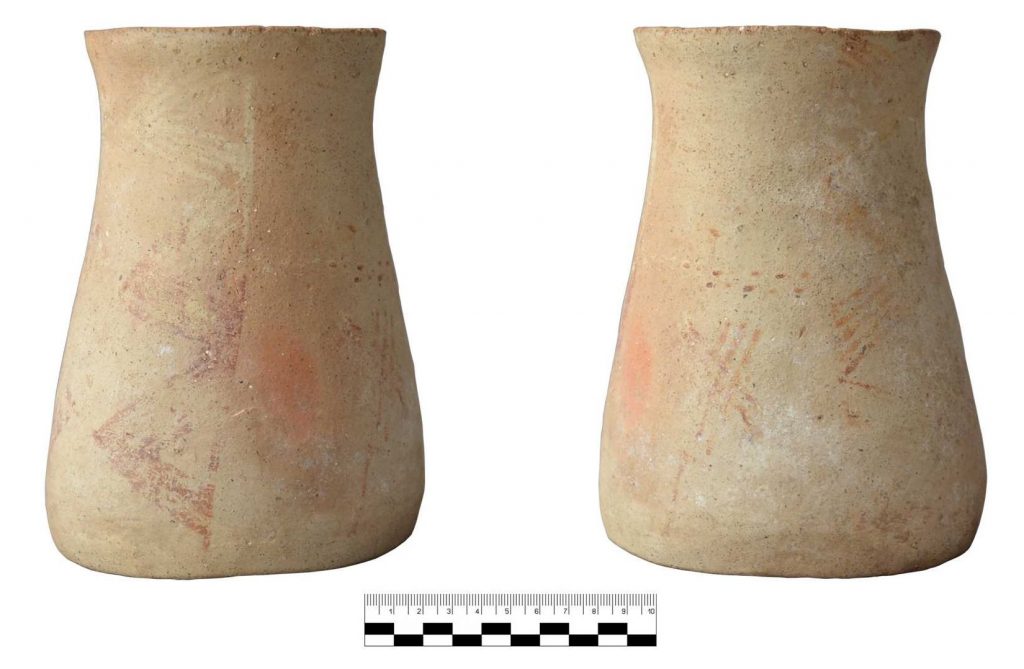
English version below. Dieses einzigartige Gefäß gefunden in der Nähe von Tandyrjul kombiniert drei kulturelle Traditionen: die Form, die mit der Vakhsh-Kultur zusammenhängt, die dekorative Technik, die mit den Traditionen der frühen Eisenzeit verbunden ist (Malerei in roter Farbe) und das dekorative Muster, das Verbindungen zeigt mit den Andronovo Töpfereien. Der Gegenstand zeugt von der Flexibilität kultureller Grenzen in der Keramikproduktion am Ende der Bronzezeit.
Konkaver Becher, handgemacht, mit geometrisch rot bemaltem Ornament.
© Y. Kutimov

Zeichnung des Bechers und des Dekors.
© Y. Kutimov
This unique vessel found in the vicinity of the site of Tandyrjul combines three cultural traditions: the shape related to the Vakhsh culture, the decorative technique related to the Early Iron Age traditions (painting of red color) and the decorative pattern which shows links with the Andronovo potteries. The item testifies to the flexibility of cultural boundaries in pottery production at the end of the Bronze Age.
| Beitrag von: Elise Luneau, Yuri Kutimov, Tatjana Germonovna Filimonova Kooperationspartner: Akhmadi Donish Institut für Geschichte, Archäologie und Ethnographie Akademie der Wissenschaften der Republik Tadschikistan Institute for the History of Material Culture Russian Academy of Sciences |
Förderung: Deutsche Forschungsgemeinschaft
